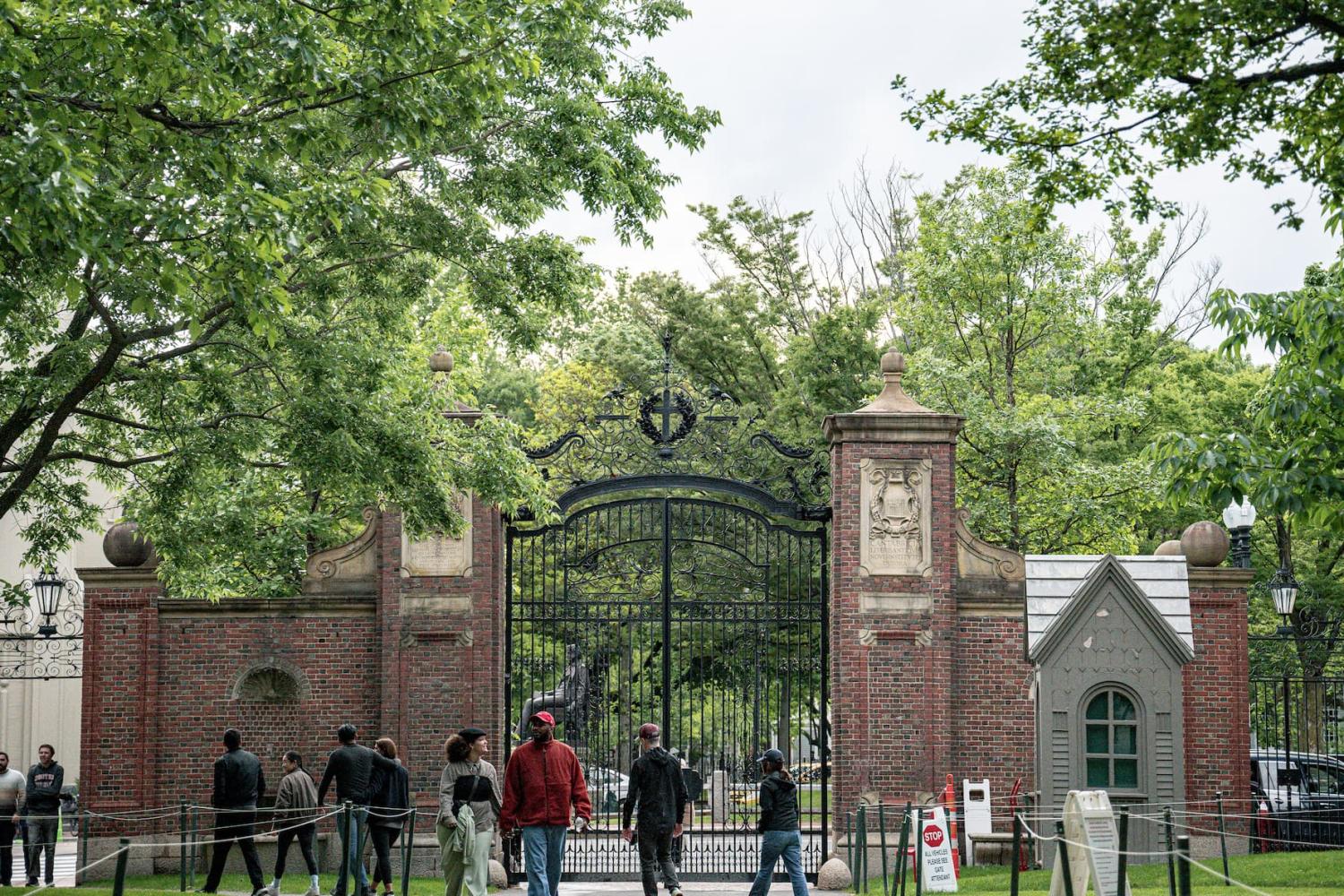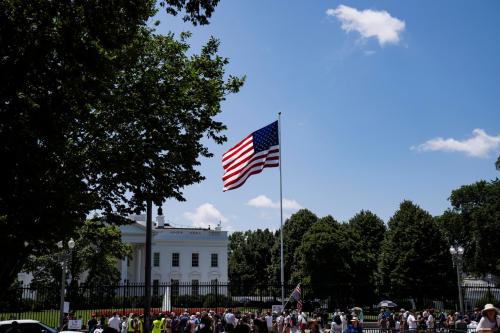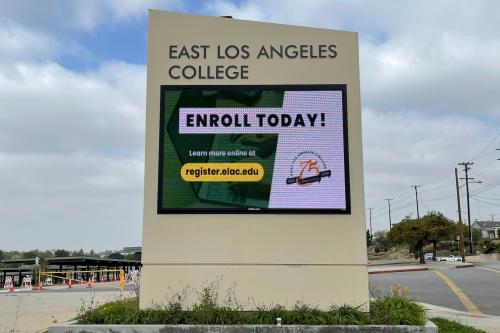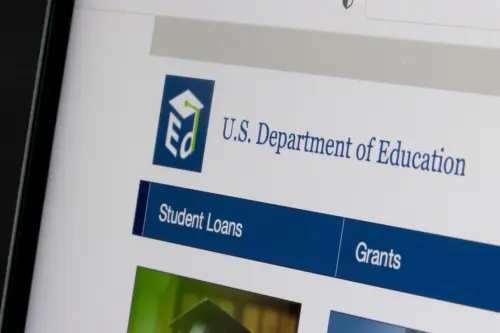Since late March, the government has been revoking international student visas or terminating their statuses, citing national security concerns. Then it stopped: While writing this Chalkboard post, a judge told the government it couldn’t do this. The government also recently told Harvard it was rescinding their authorization to enroll international students. Then, a different judge told the government it couldn’t do that to Harvard. And the latest as I write is that the government has cancelled new appointments to be cleared for a student visa.
By the time these words reach your screen, it’s anyone’s guess what new developments might affect international students enrolling in U.S. colleges and universities. So, let’s not talk about the legal stuff or politics.
Let’s talk about economics.
In particular, let’s talk about international students and our trade deficit. For a quick summary of the impact international students have, it’s hard to do better than Catherine Rampell’s column from April.
President Donald Trump says he wants to reduce our trade deficit. Yet he’s destroying one of our winningest exports: higher education. Colleges and universities are among America’s most competitive international exporters. . . We also run a huge trade surplus in this sector, meaning that foreigners buy much more education from the United States than Americans buy from other countries.
Catherine Rampell, Washington Post
I covered the issue for the Brown Center on Education Policy before the pandemic in 2017 and then again in 2018. Since then, education—primarily higher education—has become an increasingly important factor in the U.S. trade deficit. Exports occur when foreign buyers spend money on American goods or services. In this case, international students bring both their presence and their tuition payments, with the product being a degree or certificate. The figure below shows inflation-adjusted exports and imports in the education sector since 1999.
Education exports have skyrocketed, then dipped during the pandemic, and have now recovered. Imports—in the form of Americans studying abroad—have also risen, but not nearly as fast as exports. Throughout this time, America’s trade surplus in the education sector (the difference between the export and import lines) has consistently benefited the United States. The education trade surplus has grown more than threefold over the past 25 years, rising from $12 billion in 1999 to over $43 billion in 2024, adjusted for inflation.
We’ll return to talking about the trade deficit below, but first let’s consider some of the high-level economic effects of spending by the one million-plus international students when they come to the United States.
According to NAFSA: Association of International Educators, international students in the higher education sector supported almost 400,000 jobs in the 2023-24 school year. Half of the jobs were directly within colleges and universities, while the other half resulted from student spending on housing, food, retail, and other living expenses. About one-fifth of the jobs came from housing, and another fifth from food and retail spending.
Suppose we toss international students out, or just make them feel unwelcome so they don’t come. The instant economic impact of losing them would be losing their tuition dollars. At public universities, international students pay out-of-state or “non-resident” tuition and fees, which are substantially higher than what they charge in-state students. International students—or more specifically, their tuition dollars—are an essential ingredient that make the “high cost, high aid” models at many selective U.S. colleges work. As an example, the University of California (where I work) teaches roughly one international undergraduate for every nine California students. But there are two financial differences: International tuition is more than triple the tuition for California students, and while over half of California undergraduates have their tuition fully covered by aid, international students receive essentially no financial aid. One way to look at it is that a significant portion of financial aid for California students is funded by the higher tuition paid by international students.
Looking ahead, market trends in the higher education business are quite clear—and international students can clearly make a difference. College attendance by Americans is at an all-time high but is expected to decline sharply over the next 15 years, in large part because there are simply fewer children in the United States. That means there will be many open spaces available in U.S. institutions to be filled by international students. If we lose international students while domestic enrollments are also falling, many colleges will have to shrink or, in some cases, shut down.
Finally, there are the indirect economic effects, which are much harder to measure. The leaders of many nations boast American degrees, including leaders of Bahrain, Bangladesh, Belgium, Cambodia, Egypt, Iceland, Israel, Jordan, Kuwait, and Spain. And eight prime ministers or presidents of foreign countries have Harvard degrees, including Canada, Greece, Singapore, and Taiwan. It’s difficult to assign a dollar value to American-educated leaders governing much of the world, but their influence is undoubtedly valuable for international relations in both politics and business. And of course, there’s more than money involved with international students in U.S. colleges. American students benefit from getting to know students from other countries and other cultures. And I believe international students leave with admiration for much of what America represents and warm feelings toward its people.
Higher education is an internationally competitive industry, which the U.S. has dominated for a long time. The top four destination countries for foreign students are the U.S., Canada, the United Kingdom, and Australia. Destinations succeed in this competition both due to the high quality of their higher education and the preference of students and families for education in English. Interestingly, several of these other leading countries are also grappling with internal clashes over immigration. For example, Canada has capped the number of student visas it will provide, reducing them by about a third compared to two years ago. Australia is also cutting back on international students numbers. This presents an opportunity for the United States to capture a larger share of the market, provided migration concerns can be addressed.
Returning to the balance-of-trade issue, a term frequently used by the Trump administration is “non-tariff barriers.” These are measures such as regulations or unnecessary inspections that countries use to limit imports without formally imposing tariffs. Oddly, the administration appears to be adding to these non-tariff barriers on U.S. higher education exports by revoking visas and creating an unwelcoming environment for many international students. To help reduce the overall trade deficit, this moment offers a strategic opportunity to attract more students to the United States rather than impose additional obstacles.
I am not the first one to argue for making U.S. colleges and universities more attractive to international students. One specific proposal was made just about a year ago:
. . . What I want to do and what I will do is, you graduate from a college, I think you should get automatically, as part of your diploma, a Green Card to be able to stay in this country. . . And that includes junior colleges, too.
President Donald J. Trump, All-In Podcast
The Brookings Institution is committed to quality, independence, and impact.
We are supported by a diverse array of funders. In line with our values and policies, each Brookings publication represents the sole views of its author(s).








